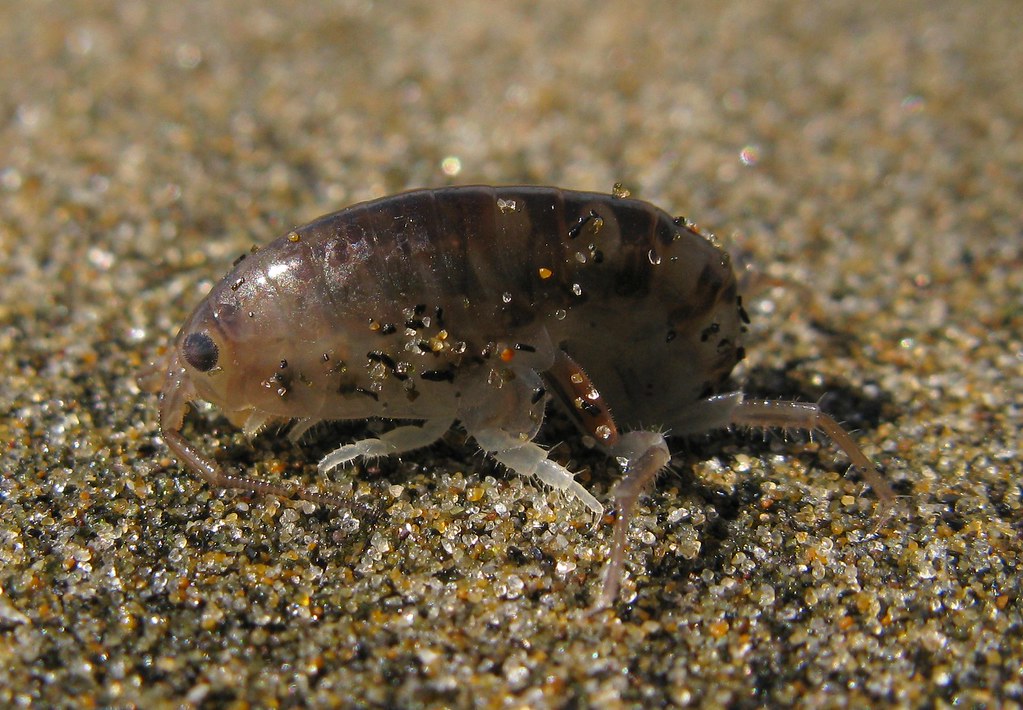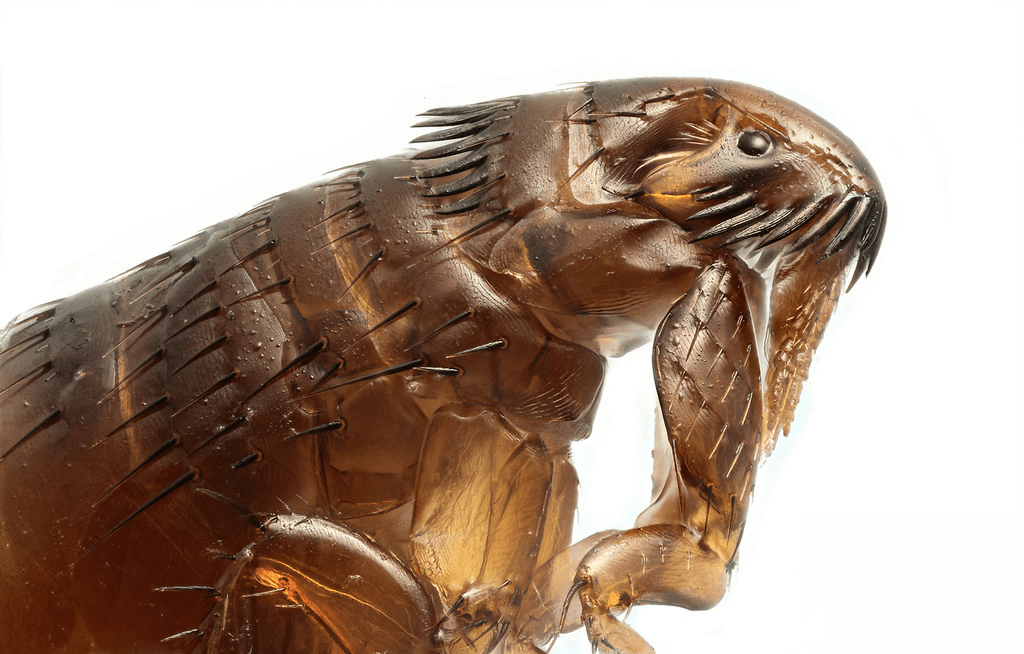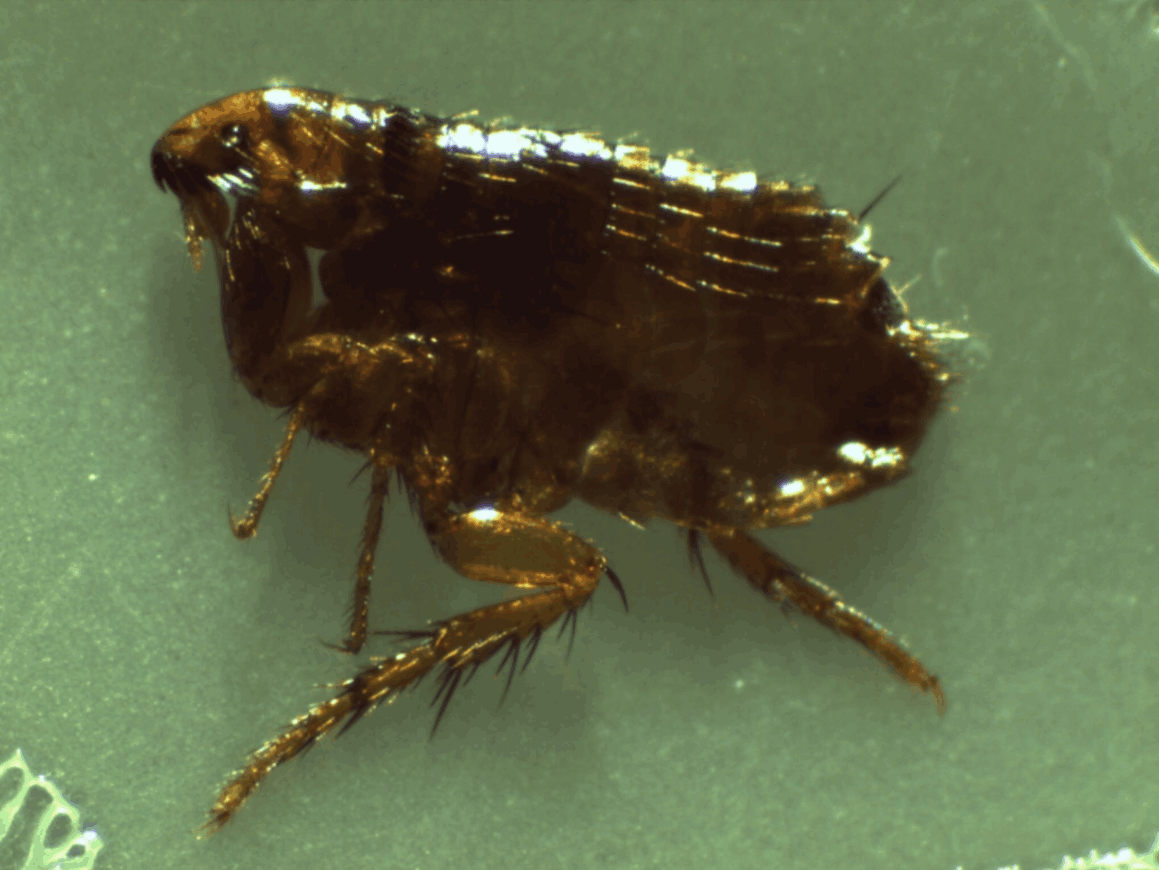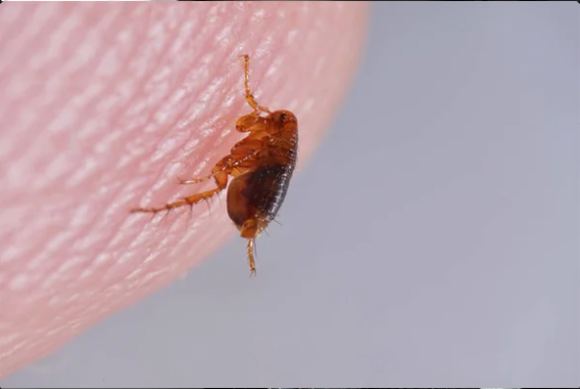How To Identify & Get Rid Of Fleas in Your House
Published Date: June 12, 2024
Fleas are more than just a nuisance; they pose significant health risks to pets and humans. These tiny, fast-moving pests can quickly turn a comfortable home into a battleground, causing itching, discomfort, and potential allergic reactions. Identifying and eliminating fleas promptly is essential for maintaining a clean and healthy living environment.
In this guide, we will explore practical strategies for identifying the presence of fleas and provide step-by-step instructions for eradicating them from your home. By following these tips, you can ensure a flea-free household, safeguarding the well-being of your family and pets.
Identifying Fleas
Understanding the appearance and characteristics of fleas is the first step in effective identification and eradication. Here are descriptions of some common types of fleas you might encounter:
Sand Flea

Sand or beach fleas are commonly found in sandy areas near water bodies. Despite their name, they are not true fleas and are generally harmless to humans, though their bites can irritate.
- Size: Approximately 0.25-1 inch long
- Color: Pale brown or grayish
- Body: Sand fleas have a laterally compressed body and long hind legs for jumping. Their appearance is more shrimp-like compared to other flea species.
Cat Flea

Cat fleas are the most common fleas found on pets and can rapidly infest homes. Despite their name, cat fleas can also infest dogs, rabbits, and even humans.
- Size: About 0.08-0.12 inches long
- Color: Dark Brown
- Body: Cat fleas have a flattened body that allows them to move easily through the host’s fur. They have long hind legs for jumping and backward-facing bristles to aid in movement through the fur.
Dog Flea

Dog fleas are similar to cat fleas and can infest various hosts, including dogs, cats, and humans. Although they are less common than cat fleas, they can still cause significant issues.
- Size: About ⅛ of an inch long
- Color: Dark brown.
- Body: Dog fleas have a flat body, strong claws, and long hind legs designed for jumping. They are very similar in appearance to cat fleas but can be distinguished under a microscope by slight differences in their head shape and bristles.
Human Flea

Human fleas can infest humans and animals, although they are less common in modern, hygienic living conditions.
- Size: Approximately 0.039 to 0.13 inch in length.
- Color: Dark brown.
- Body: Human fleas have a rounder body compared to other fleas. They are known for their ability to jump long distances relative to their size.
Identifying fleas correctly is vital for implementing the proper treatment and control measures. Understanding their physical characteristics will help you spot them early and take prompt action to protect your home and pets from these persistent pests.
Spotting Flea Hotspots
Fleas are adept at hiding and reproducing in various parts of your home, making knowing where to look for them essential. Identifying these hotspots is crucial for effective flea control and prevention. Here’s where you are most likely to find fleas:
- Pet Bedding: Fleas often infest areas where pets sleep, such as their beds, blankets, and favorite resting spots. The warmth and close contact with pets make these areas ideal for flea breeding.
- Carpets and Rugs: Fleas thrive in the fibers of carpets and rugs, where they can hide and lay eggs. The dense fibers provide a perfect environment for flea larvae to develop.
- Furniture: Upholstered furniture, including sofas and chairs, can harbor fleas, especially in the seams and crevices. Pets lounging on furniture can quickly transfer fleas to these areas.
- Cracks in Floors: Fleas can hide in the smallest spaces, including cracks in hardwood floors or between tiles. These hidden spots offer protection and a breeding ground away from plain sight.
- Baseboards and Edges: The edges of rooms and baseboards can accumulate flea eggs and larvae. These areas are often overlooked during regular cleaning, allowing fleas to proliferate.
- Pet Carriers and Crates: Fleas can infest pet carriers, crates, and cages, mainly if these are used frequently for transporting pets.
- Outdoor Areas: If your pets spend time outside, areas like kennels, dog houses, and shaded spots in the yard can also become infected. Fleas can be brought indoors from these locations.
Importance of Thorough Inspection
A comprehensive inspection is essential to locate flea breeding grounds and eradicate an infestation. Here’s why thorough inspection matters:
- Prevents Reinfestation: Fleas can quickly repopulate if breeding grounds are missed during initial treatments. Identifying all hotspots ensures that you tackle the infestation at its source.
- Protects Health: Fleas can transmit diseases and cause allergic reactions. You minimize health risks to your pets and family by thoroughly inspecting and treating all potential hotspots.
- Saves Time and Money: Early detection and thorough treatment can prevent a minor infestation from becoming a significant problem, saving you time and money on more extensive treatments.
Focusing on these typical flea hotspots and conducting a detailed inspection can effectively control and eliminate flea infestations in your home, ensuring a healthier and more comfortable living environment for you and your pets.
How To Get Rid Of Fleas
Eliminating fleas from your home requires a comprehensive approach to ensure you address all stages of the flea life cycle. Here are the steps to effectively get rid of fleas and prevent them from returning:
Treat Your Pets
Use Veterinary-Recommended Treatments:
- Consult your veterinarian for the best flea treatment options.
- Apply treatments according to the veterinarian’s instructions.
Regular Bathing:
- Bathe your pets with mild flea shampoos to kill fleas on contact.
- Follow the recommended bathing schedule.
Clean and Vacuum Thoroughly
Vacuum Regularly:
- Vacuum all areas of your home, including pet bedding and under furniture.
- Dispose of the vacuum bag or empty the canister outside immediately.
Wash Bedding and Linens:
- Wash all pet bedding, blankets, and removable furniture covers in hot water.
- Dry them on the highest heat setting.
Use Flea Control Products
Insect Growth Regulators (IGRs):
- Apply IGRs to carpets, rugs, and furniture according to product instructions.
Insecticides:
- Treat carpets, rugs, furniture, and cracks in floors with insecticides.
- Follow all safety instructions on the label.
Natural Remedies:
- Sprinkle food-grade diatomaceous earth in carpets; vacuum after a few hours.
- Use diluted essential oils to spray around the house, avoiding direct contact with pets.
Treat Outdoor Areas
Yard Maintenance:
- Mow the lawn regularly and remove leaf litter and debris.
- Apply outdoor flea control products to shaded areas.
Flea Control Products:
- Use products designed for outdoor use to treat lawns, patios, and kennels.
- Follow the product instructions for safe and effective application.
Prevent Reinfestation
Regular Pet Checkups:
- Regularly check your pets for signs of fleas and maintain preventive treatments.
- Schedule routine veterinary visits and adhere to a consistent flea prevention plan.
Maintain Cleanliness:
- Continue regular vacuuming and washing bedding.
- Maintain yard cleanliness to prevent flea habitats.
Seek Professional Help if Needed
Pest Control Services:
- Hire a licensed pest control service if your flea infestation persists.
- Allow professionals to assess and treat your home comprehensively.
Preventing Future Infestations
Preventing future flea infestations requires ongoing maintenance and vigilance. Here’s how to keep your home and pets protected:
Maintain Regular Flea Prevention for Pets
- Use veterinary-recommended flea prevention products consistently.
- Follow the recommended dosage and application instructions for flea treatments.
- Keep pets indoors during peak flea seasons to reduce their exposure.
Practice Good Pet Hygiene
- Bathe and groom your pets regularly to remove fleas and dirt.
- Use flea combs to detect and remove fleas from your pet’s fur.
- Keep your pet’s living area clean by washing bedding and vacuuming frequently.
Keep Your Home Clean
- Vacuum carpets, rugs, and furniture regularly, focusing on areas where pets spend time.
- Wash pet bedding, blankets, and linens in hot water to kill fleas and their eggs.
- Declutter your home to reduce hiding spots for fleas and their eggs.
Treat Outdoor Areas
- Maintain your yard by mowing the lawn regularly and removing leaf litter and debris.
- Use outdoor flea control products in areas where pets frequent, such as patios and kennels.
- Consider creating a barrier between your yard and neighboring wildlife to reduce the risk of flea transmission.
Monitor for Signs of Fleas
- Regularly check your pets for signs of fleas, such as excessive scratching or redness.
- Look for flea dirt (black specks resembling pepper) on your pet’s fur or bedding.
- If you suspect a flea infestation, take immediate action to prevent it from spreading.
Seek Professional Advice
- Consult your veterinarian for personalized recommendations on flea prevention and treatment.
- If you experience recurrent flea infestations despite your efforts, consider seeking professional pest control services.
- Pest control experts can assess your home and recommend effective strategies for long-term flea prevention.
By consistently implementing these preventive measures, you can reduce the risk of future flea infestations and keep your home and pets healthy and comfortable.
Best Pest Control Companies
Determining the best pest control company can depend on various factors, such as your location, the type of pest problem you’re dealing with, your budget, and whether you prefer eco-friendly solutions. Here are some reputable pest control companies that are widely recognized for their quality service:
|
Company Name |
Deals with |
Offers/ Discounts |
Best For |
|
|
Orkin |
Termites, Cockroaches, Mosquitoes, Bed bugs, Ants, Flies, Stinging pests, Rodents and others |
- |
Best Overall |
|
|
Terminix |
Ants, Mosquitos, Moth, Centipede, Millipede, Rodents, Bed Bugs, Silverfish, and others |
$50 Off a new pest control plan |
Best For Termite Treatment |
|
|
Truly Nolen |
Termites, Rodents, Bees, Wasps, Bugs, Flies, Lice, Moths, Crickets, Roaches, Silverfish, and others |
Online Discount For $50 Off |
Best Response Time (24 Hours) |
|
|
Rentokil |
Rodents, Cockroaches, Ants, Flies, Bed bugs, Beetles, Weevils, Moths, Birds, and others |
- |
Best For Sustainable Pest Control |




